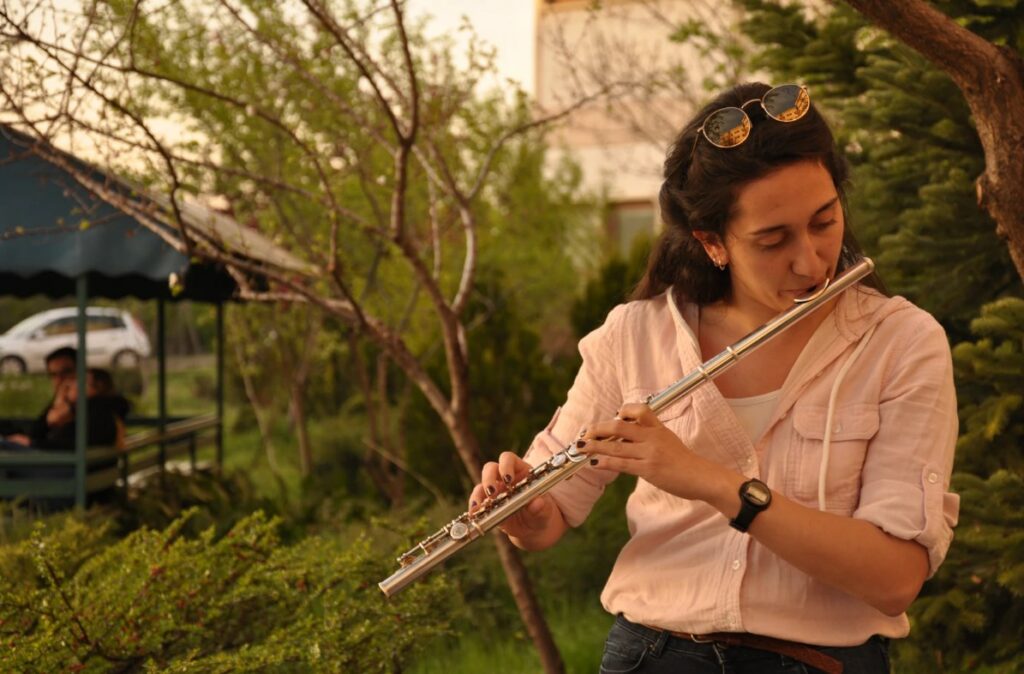- Top Trumpet Embouchure Techniques: Options for Beginners Through Professionals - October 12, 2022
- Is the Trumpet Hard to Learn? - September 30, 2022
- Best Leblanc Clarinet Models Guide: From Soprano to Contrabass - September 5, 2022
When researching professional piccolos, be sure to read through a Hammig piccolo guide. Hammig is one of the biggest brands in this space and for a good reason.
After trying five or six different piccolos, I knew Hammig was the brand for me. But it’s up to you to figure out if the same is true in your case.
Bottom Line Up Front: I love my Hammig 650/3 because it sounds amazing and blends well with other instruments. However, I’d recommend you try all of the piccolos from Hammig to see if they work for you.
Best Hammig Piccolo Models
Even if you know Hammig is the right brand for you, you should still compare the different models. Hammig makes four models that are all relatively popular.
The piccolos are at the professional level, so you won’t find any beginner models. However, if you’ve played the piccolo for a while, Hammig is a fantastic brand to consider.
I’m not just saying that because I play a Hammig piccolo. If the brand works well with your playing, you can get an excellent sound, so consider the available models.
Hammig 650/2
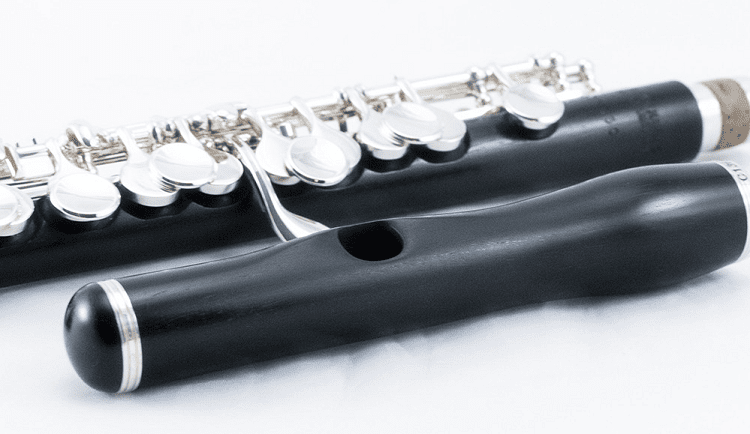
The Hammig 650/2 is the entry-level piccolo from this brand. I tried one when I was searching for a professional piccolo, and it sounded good enough for my master’s flute professor to have me test it in more detail for a few days.
This model uses grenadilla wood, which is the standard piccolo wood, for the headjoint and body. It also has silver-plated keys to help keep the price from being too high.
You’ll get a split E mechanism to help play the E above the staff without the note cracking. This model can come with a traditional headjoint cut, but you can also get it with a modified wave or a modified thin wave cut.
I tried this piccolo with a traditional headjoint, which may be why it wasn’t for me. Since I put a ton of air through my piccolo, the wave cut handles it much better (for me).
Pros
- Good sound
- Easy to play
- Relatively affordable
- Different headjoint cuts
Cons
- Pretty basic specs
- Expensive for what it is
Hammig 650/3

When I tried some wood piccolos, I ended up buying the Hammig 650/3. The purchase did take me a bit over my budget, but I believe it was well worth it.
This model has a lot of the same specs as the 650/2. You’ll get a grenadilla wood headjoint and body, a silver-plated mechanism, and a split E key.
But you’ll also get a high G# mechanism. The mechanism causes the thumb tone holes to close part of the way when you depress the G# key.
That only makes a difference for a few notes, one of which is a high G# or Ab. It can be hard to play that note well, so many players use alternate fingerings, but the G# mechanism eliminates that need.
Pros
- Easy to play
- Fantastic sound
- Blends with other instruments
- High G# mechanism
- Multiple headjoint cuts
Cons
- A bit expensive
- Not for every player
Hammig 650/4
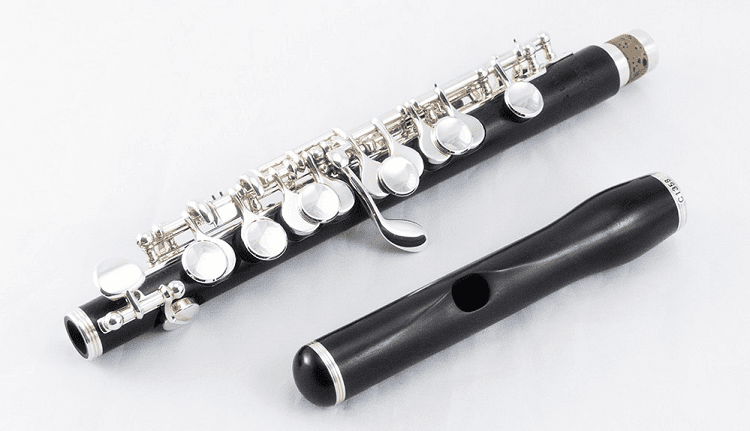
If you’re looking at the Hammig 650/4, you’re looking at some of the most expensive piccolos out there. Like the other Hammig piccolos, there are only a few small differences on this model.
The most significant difference from the 650/3 is that the 650/4 has solid silver keys. However, those keys will cost you an extra $2,000 or so, and I think that’s ridiculous.
Key materials make almost no difference in your sound, so you might as well go with the 650/3. But if you find that silver plating tends to wear off your flutes, it may be worth paying more.
While I have yet to play the Hammig 650/4 for myself, I imagine it doesn’t sound much different from the other models. So give it a try and see if it’s worth it for you.
Pros
- Solid silver keys
- Good tone
- Easy to play
- Various headjoint styles
Cons
- Very expensive
- Nothing too unique
Hammig 651/4
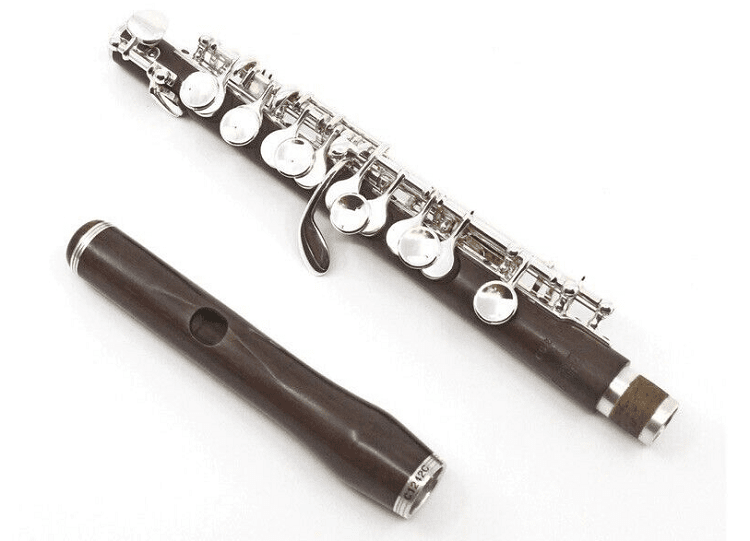
The Hammig 651/4 is an excellent option for players with an unlimited budget. You get a lot of the same features as the other models, from the split E key to the high G# mechanism.
It’s the one Hammig piccolo model that uses cocus wood as opposed to grenadilla. According to another piccolo maker, cocus wood sounds brighter and offers more resonance than grenadilla.
So if you tend to play the piccolo as a soloist, you may want to get this model. That way, you can easily project over an orchestra or any other ensemble you perform with.
If you don’t want a full cocus wood model, the other Hammig piccolos come with the option to get a cocus headjoint. That way, you can get the bright sound on a smaller budget.
Pros
- Great for soloists
- Bright tone
- Good resonance
- Best for piccolo specialists
Cons
- Very expensive
- May be hard to blend with others
How to Choose a Hammig Piccolo
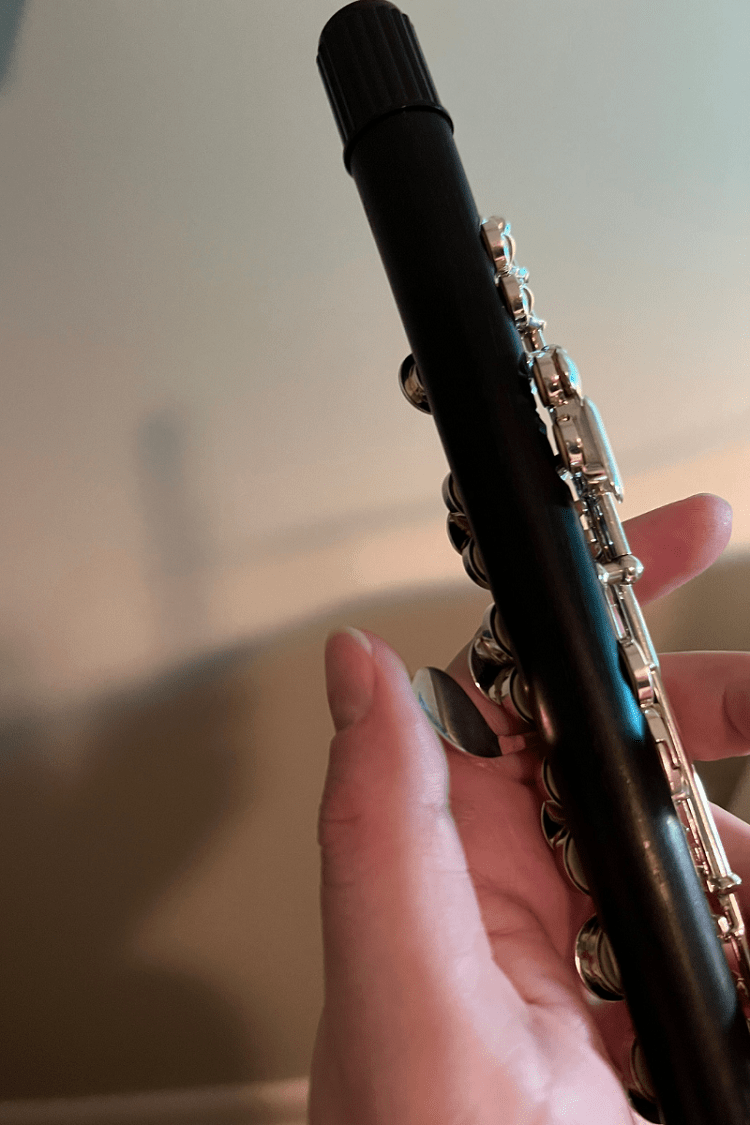
Hammig piccolos aren’t for everyone, but they’re worth testing out when you reach an advanced level. I know another piccolo player who didn’t like how she sounded on a Hammig, but she knows the brand can play great.
So before you totally knock Hammig, consider how to choose the perfect model for you. Despite the minute changes in specs between models, one piccolo may work much better for you than another.
Like any type of flute or piccolo, you have to be careful when choosing your next instrument. Here are my best tips to help you select a Hammig piccolo that you’ll love.

Start With Your Budget
If you want to buy a Hammig piccolo, plan to set aside at least $5,500. That way, you can test out a couple of the lower-level models as well as the various headjoint cuts.
And if you’re reading this in a few years, you may need closer to $6,000. The price of Hammig piccolos has gone up more than you might expect in the less than two years since I bought mine.
Regardless of the price, having some sort of budget will come in handy. You can use your budget to help choose the models that make the most sense for you to request a trial from a flute store.
Look at the Specs
You should also think about the different specs you want on your new piccolo. As I mentioned, each Hammig piccolo offers something slightly different.
All models come standard with a split E mechanism, and most use grenadilla wood. But you may want to get the high G# mechanism, and I’m glad I did.
It’s so nice to not have to remember alternate fingerings. I’ll be playing some high piccolo parts in the coming months, and I know that key will come in handy.
Compare Headjoint Cuts
A more specific spec you should look at is the headjoint cut. I got to try the traditional and modified wave cuts, and both were relatively easy to play on.
However, I’d been playing a Pearl 105 with a wave cut headjoint for a few years before buying my Hammig. That meant I was used to using the airstream necessary to get a good sound with a wave headjoint.
If you’ve played on a traditional headjoint, you may prefer the traditional cut. Or you might like the modified thin wave cut if you like having a lip plate carved into the wood.
Another thing to consider is trying headjoints from other brands. Mancke and Hernandez are two well-known piccolo headjoint makers, and their headjoints sound great on Hammig piccolos.
Test the Piccolos
If you only take one tip seriously, make it this one. The best way to determine if a piccolo is a good fit for you is to try it yourself.
I was lucky enough to have a flute teacher set up a massive flute and piccolo trial for her whole studio. But you can set up a trial for yourself through any of the big flute shops, such as Carolyn Nussbaum Music Company, FluteWorld, or Flute Center of New York.
The store will send you a few piccolos at a time so that you can try and compare them. They can also send multiple headjoints for you to test out to get the best cut for you.
Be sure to try the specific piccolo that you intend to purchase. Since Hammig piccolos are handmade, there can be small discrepancies even between two 650/2s or 650/3s.
Play Your Current Piccolo
When conducting a piccolo trial, have your current piccolo on hand. Not only should you compare the Hammig models, but you should also compare them to the piccolo you already use.
That way, you can make sure the piccolo upgrade will make a significant difference in your playing. For me, upgrading to a Hammig helped my tone and technique a lot.
But if you’re already playing on a wood model, you might not notice a big change. You’ll only know that for sure if you compare the piccolos in your trial to the one you own.
Try Other Brands
You might also want to compare a Hammig piccolo or two to some from other companies. In my trial, I also tested a Burkart Professional, a Powell Signature, and a Yamaha, though I don’t remember the model number.
Testing different brands allows you to make extra sure that a Hammig piccolo is for you. My teacher and I realized that Hammig is the brand for me, but you may get different results.
The other piccolos I tested were all around the same price as the Hammig 650/2 and 650/3. They’re good options to compare if you’re looking at a similar range as I was.
What Makes Hammig a Good Piccolo Brand

Hammig is one of the best piccolo brands out there, but it makes sense to wonder why that is. I can talk all day about my experience playing one.
However, I also know there are more objective factors that make Hammig a reputable piccolo company. If you’re trying to decide if you should invest in a Hammig piccolo, consider the following things.
Then, you can determine if Hammig is the brand for you.
It’s Their Specialty
I’ve seen a handful of Hammig flutes, but the piccolos are much more well-known. I don’t know of anyone who plays a silver flute from Hammig, but I do know a couple of people who play their piccolos.
Other brands that specialize in the piccolo include Keefe and Pettry Piccolos. Both of those brands charge significantly more than Hammig, and they don’t have as many models available.
Also, the Hammig family started making woodwinds back in 1780. The company has had plenty of time to refine their process for making excellent piccolos and flutes.
Handmade
As you would hope at their prices, Hammig piccolos are handmade. That means someone has control over every step of the manufacturing process to help produce a great instrument.
Machine-made instruments can sound good, but they aren’t as individual. Handmade instruments can make a world of difference when it comes to getting better at your instrument.
Plus, if one handmade Hammig piccolo doesn’t suit you, that’s okay. You can try another model or headjoint to see if that may work better based on the finishing.
Custom Options
At the professional level, you can expect a good amount of custom options. Fortunately, Hammig doesn’t disappoint thanks to multiple headjoints.
However, you can also request a high G/A trill on many of the models. That makes it easier to trill from a high G to A without having to use an alternate fingering.
You can also even request an open G# key, while most piccolos and flutes have a closed G# key. I’d only do that if you’re comfortable practicing a lot because it will affect almost every fingering on the piccolo.
Good Mechanism Design
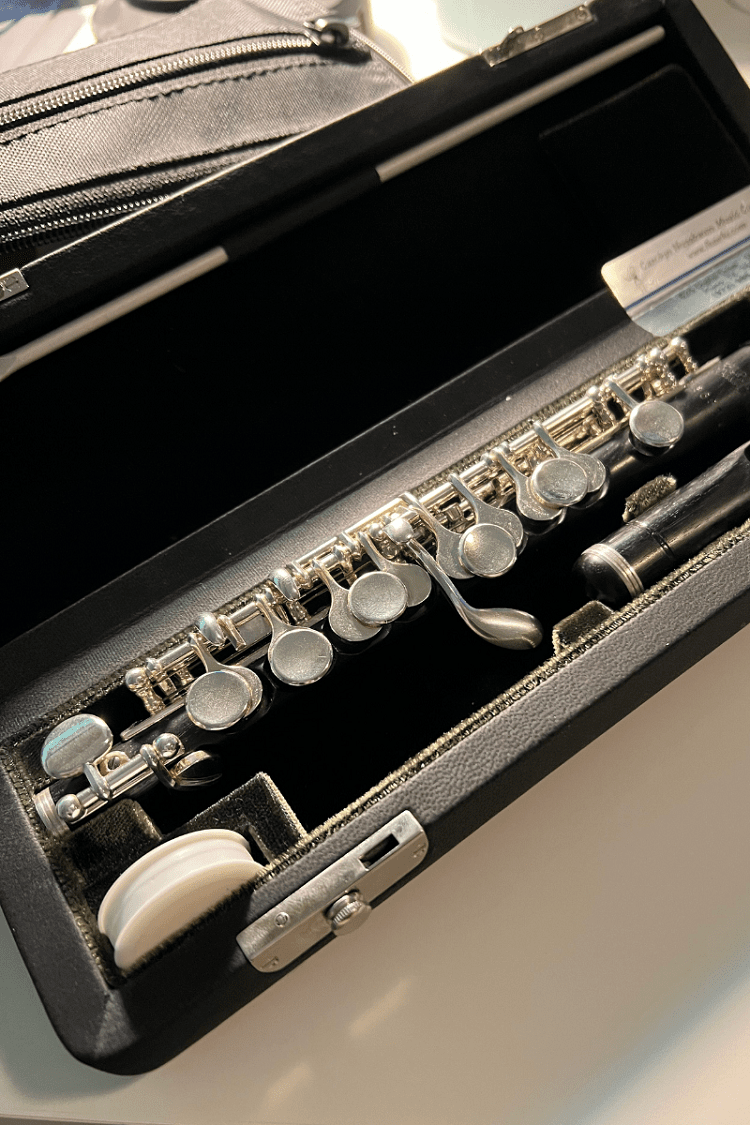
The Hammig piccolos also have an excellent mechanism. It’s easy to reach the trill keys, but you can feel them and so can avoid bumping them accidentally.
Reaching the Bb lever with your right hand is easy, and so is reaching the G key with your right hand. That comes in handy if you have a long trill from a G to an A in the first or second octave (such as in Beethoven Symphony 5).
The G is offset like it would be on a flute so that your left-hand ring finger doesn’t have to reach so far. Also, the E and D keys on the right hand are offset so that you don’t have to squeeze your fingers together.
FAQs about the Hammig Piccolo Guide
Answer: Buying a used Hammig piccolo can be a great way to save money. However, you should still use the same shopping tips, such as trying the piccolo for yourself.
I’d also recommend you go through a reputable dealer, such as a flute shop or someone like Dana Shaw from The Flute Finder. That way, you can make sure to get a piccolo that’s in playing condition and won’t require expensive repairs.
Answer: You can buy a Hammig piccolo from any of the major flute specialty shops, such as Flute World or Flute Specialists. I got mine through Carolyn Nussbaum Music Company.
Unfortunately, you won’t find the piccolo on Amazon or even at your local Music & Arts store. When shopping for any professional piccolo, flute shops are the best place to start.
Answer: You’ll have the same risks you would when buying any piccolo, such as not liking it a few months after purchase. But since it’s a wood piccolo, you also have the risk of the wood cracking.
This happened to me in the summer of 2021, but my flute tech was able to repair the piccolo. To help mitigate the risk of cracks, keep your piccolo in a stable climate, and consider using almond oil to oil the headjoint (NOT the body).
Answer: Care starts before you start practicing and continues long after you stop. Before you play, warm up the headjoint with your hand or by placing it under your arm so that you can reduce the chances of the wood cracking.
You should also swab out the piccolo after you finish playing. Then, put it in its case and in the case cover or another insulated bag for storage.
Answer: The best way to know which headjoint cut is best is to try all of them. Consider the cut on your current piccolo and if you do or don’t like it and how it plays.
Then, you can use that to narrow your search for the best headjoint. As I mentioned, I already played well on a wave headjoint, so I went with that, but you pay like a different style.
Answer: At least if you buy it new, you’ll get a cleaning rod and a pallet of cork grease. Personally, I use a Valentino piccolo wand instead of the cleaning rod because the Valentino is long enough to work without disassembling the piccolo.
I use a tube or cork grease that looks like a lip balm since it’s easier to put on the cork on the piccolo body. You should also get a pair of earplugs to protect your hearing and a piccolo stand for small practice breaks.
Final Note on the Hammig Piccolo Guide
If you want to reach a high level of piccolo playing, you should consult a Hammig piccolo guide. While the brand isn’t for every player, it can work well for some.
I love my Hammig 650/3, so I’d recommend it to anyone. It’s a bit more expensive than the 650/2, but the high G# mechanism is so worth it. Plus, you probably won’t need the solid silver keys that come on the 650/4.
For more interesting readings check out:



